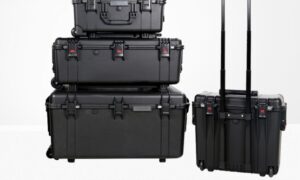In recent years, the packaging industry has undergone a technological transformation, and at the forefront of this revolution are robotic arms. These automated systems are not just science fiction anymore; they are practical, high-performing solutions that have reshaped the way businesses package goods—including butter. With their speed, precision, and adaptability, robotic arms have become indispensable for companies looking to optimize efficiency, reduce costs, and maintain product quality. This article delves into the transformative role robotic arms play in butter packaging, exploring their advantages, applications, and the future of this burgeoning technology.
The Rise of Automation in Packaging
Automation has steadily gained traction across industries, and the food sector is no exception. For butter packaging, in particular, the challenges of maintaining hygiene, ensuring consistent product quality, and meeting escalating consumer demand have driven the adoption of robotic solutions. Robotic arms have emerged as a key innovation, allowing companies to streamline their operations while maintaining stringent quality standards.
Unlike traditional manual labor or conventional packaging machinery, robotic arms offer unparalleled flexibility and efficiency. These machines can be programmed to perform a variety of tasks, from cutting and folding wrappers to placing packaged butter onto conveyor belts. With advancements in artificial intelligence (AI) and machine learning, these robotic systems are becoming smarter and more adaptable, making them an essential investment for competitive businesses.
Key Benefits of Robotic Arms in Butter Packaging
1. Enhanced Speed and Productivity
One of the most significant advantages of robotic arms is their ability to perform repetitive tasks at speeds far exceeding human capabilities. In butter packaging, tasks such as cutting, folding, and sealing wrappers can be completed in a fraction of the time it would take a human worker by using butter packaging machine arm. This speed not only boosts productivity but also enables companies to meet tight deadlines and large-scale orders without compromising quality.
2. Improved Accuracy and Consistency
Consistency is crucial in butter packaging, where even slight deviations can affect product quality and consumer satisfaction. Robotic arms are designed to execute tasks with pinpoint accuracy, ensuring every package meets exact specifications. Whether it’s cutting butter blocks to uniform sizes or sealing wrappers without leaks, robotic arms minimize errors, thereby reducing waste and improving overall efficiency.
3. Cost Savings
Although the initial investment in robotic arms can be substantial, the long-term cost savings are undeniable. By reducing reliance on manual labor, companies can cut operational costs while increasing output. Additionally, robotic systems require minimal maintenance compared to traditional machinery, further enhancing their cost-effectiveness.
4. Enhanced Hygiene and Safety
In the food industry, maintaining hygiene standards is non-negotiable. Robotic arms help eliminate potential contamination risks associated with human handling. These systems can operate in sterile environments, ensuring the butter packaging process adheres to stringent health and safety regulations. Moreover, robotic arms reduce workplace injuries by taking over physically demanding or hazardous tasks.
5. Flexibility and Scalability
Modern robotic arms are highly adaptable, capable of handling various packaging designs and sizes. This flexibility makes them ideal for companies that need to cater to diverse consumer preferences or experiment with new packaging styles. Furthermore, as businesses grow, robotic systems can be easily scaled up to meet increased production demands.
Applications of Robotic Arms in Butter Packaging
1. Cutting and Portioning
Precision cutting is a critical aspect of butter packaging. Robotic arms equipped with advanced sensors and cutting tools can divide butter into uniform portions with exceptional accuracy. This ensures each package meets weight and size requirements, reducing wastage and improving efficiency.
2. Wrapping and Sealing
Wrapping butter blocks in foil or paper requires a delicate touch to ensure the product remains fresh and visually appealing. Robotic arms excel at this task, folding and sealing wrappers with precision. These systems can also handle various wrapping materials, offering companies the flexibility to adapt to different packaging needs.
3. Quality Control
Robotic systems equipped with vision technology can perform real-time quality checks during the packaging process. These systems can detect defects such as uneven cuts, torn wrappers, or improperly sealed packages, ensuring only high-quality products reach consumers. Automated quality control reduces the need for manual inspections, saving time and resources.
4. Palletizing and Distribution
After packaging, butter products need to be organized and prepared for distribution. Robotic arms can stack packages onto pallets with speed and accuracy, optimizing space and ensuring stability during transportation. This automation simplifies logistics and reduces labor requirements in the supply chain.
The Role of AI and Machine Learning
The integration of AI and machine learning has further enhanced the capabilities of robotic arms in butter packaging. These technologies enable robots to learn from data, adapt to new tasks, and improve their performance over time. For example, AI-powered robotic arms can analyze production data to identify inefficiencies and suggest optimizations. Machine learning algorithms can also enable robots to recognize and adapt to variations in butter consistency, packaging materials, or environmental conditions, ensuring seamless operations.
Challenges and Considerations
While the benefits of robotic arms in butter packaging are clear, companies must also consider certain challenges:
- High Initial Costs: The upfront investment in robotic systems can be a barrier for small or medium-sized businesses. However, the long-term savings and productivity gains often justify the expense.
- Training and Maintenance: Operating robotic systems requires skilled personnel for programming, troubleshooting, and maintenance. Companies must invest in training programs to ensure their workforce can effectively manage these advanced technologies.
- Integration with Existing Systems: Incorporating robotic arms into existing production lines can be complex, requiring careful planning and customization. Businesses must work with experienced providers to ensure seamless integration.
- Technological Dependence: Over-reliance on automation can pose risks, such as downtime during technical failures. Companies should have contingency plans in place to minimize disruptions.
The Future of Robotic Arms in Butter Packaging
The adoption of robotic arms in butter packaging is expected to grow as technology continues to evolve. Innovations in AI, sensor technology, and robotics are likely to make these systems even more efficient, affordable, and user-friendly. In the future, we may see fully automated production lines where robotic systems handle every aspect of butter packaging, from cutting and wrapping to palletizing and distribution.
Additionally, sustainable packaging is becoming a priority for consumers and businesses alike. Robotic arms can play a crucial role in this transition by efficiently handling eco-friendly materials, reducing waste, and enabling innovative packaging designs.
Conclusion
Robotic arms are revolutionizing the butter packaging industry by offering unmatched speed, precision, and adaptability. These systems address critical challenges such as maintaining hygiene, reducing waste, and meeting growing consumer demand. While the initial investment may be high, the long-term benefits—including cost savings, improved efficiency, and enhanced product quality—make robotic arms a worthwhile investment for forward-thinking companies.
As technology continues to advance, robotic arms will undoubtedly become an even more integral part of the packaging industry. For businesses looking to stay competitive in a fast-paced market, adopting robotic solutions is not just an option; it’s a necessity. By embracing automation, the butter packaging sector is poised for a future marked by innovation, sustainability, and unparalleled efficiency.



































